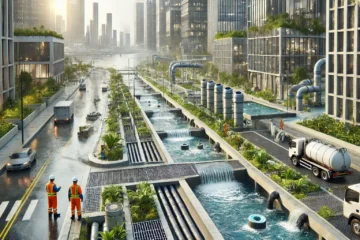The Rise of AI and Machine Learning in MEP: A New Era of Efficiency and Innovation
Introduction
The integration of Artificial Intelligence (AI) and Machine Learning (ML) is reshaping industries across the globe, and the Mechanical, Electrical, and Plumbing (MEP) engineering sector is no exception. By harnessing the power of these technologies, MEP engineers are unlocking new levels of efficiency, innovation, and sustainability.
Key Applications of AI and ML in MEP
- Design Optimization:
- Generative Design: AI algorithms can generate multiple design options based on specific constraints and objectives, leading to more optimal and innovative solutions.
- Real-Time Simulation: AI-powered simulation tools can accurately predict system performance under various conditions, enabling engineers to fine-tune designs for maximum efficiency.
- Predictive Maintenance:
- Sensor Data Analysis: ML algorithms can analyze sensor data from MEP systems to identify potential issues before they escalate into major problems.
- Predictive Modeling: By learning from historical data, AI models can predict equipment failures and schedule maintenance proactively.
- Energy Efficiency:
- Energy Performance Simulation: AI-driven simulation tools can optimize energy consumption by analyzing building performance data and identifying areas for improvement.
- Real-Time Energy Management: AI algorithms can dynamically adjust system settings to optimize energy usage based on real-time factors like occupancy and weather conditions.
- Construction Automation:
- Robotic Automation: AI-powered robots can automate repetitive tasks such as pipe fitting, wiring, and insulation, improving accuracy and reducing labor costs.
- Autonomous Site Inspections: Drones equipped with AI can conduct site inspections, identify potential issues, and generate detailed reports.
- Facility Management:
- Fault Detection and Diagnosis: AI algorithms can analyze building data to detect anomalies and identify the root cause of problems, leading to faster resolution times.
- Space Optimization: AI-powered tools can optimize space utilization by analyzing occupancy patterns and identifying underutilized areas.
Benefits of AI and ML in MEP
- Increased Efficiency: Automation of routine tasks and optimized workflows lead to significant time and cost savings.
- Improved Design Quality: AI-powered design tools generate more accurate and innovative designs.
- Enhanced Energy Efficiency: AI-driven energy management systems reduce energy consumption and lower operational costs.
- Reduced Maintenance Costs: Predictive maintenance strategies minimize unplanned downtime and maintenance expenses.
- Enhanced Building Performance: AI-optimized systems provide better indoor environmental quality and occupant comfort.
Challenges and Considerations
- Data Quality and Quantity: High-quality data is essential for training AI models.
- Integration with Existing Systems: Seamless integration with legacy systems can be complex.
- Cybersecurity: Protecting sensitive building data from cyber threats is crucial.
- Initial Investment: Implementing AI and ML solutions requires significant upfront investment.
Conclusion
The integration of AI and ML in the MEP industry is poised to revolutionize the way buildings are designed, constructed, and operated. By embracing these technologies, MEP engineers can create more sustainable, efficient, and intelligent buildings that meet the evolving needs of the 21st century.


